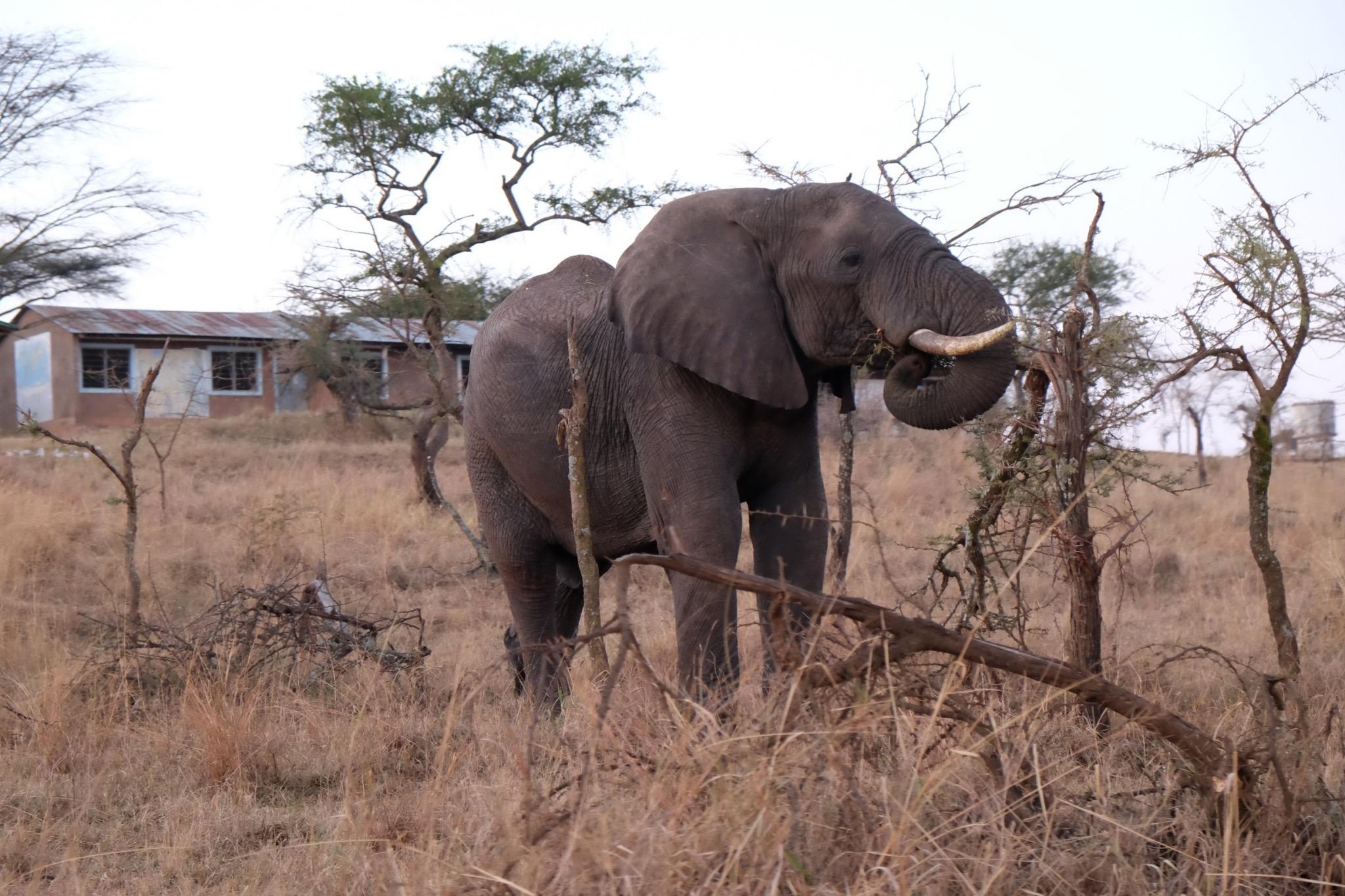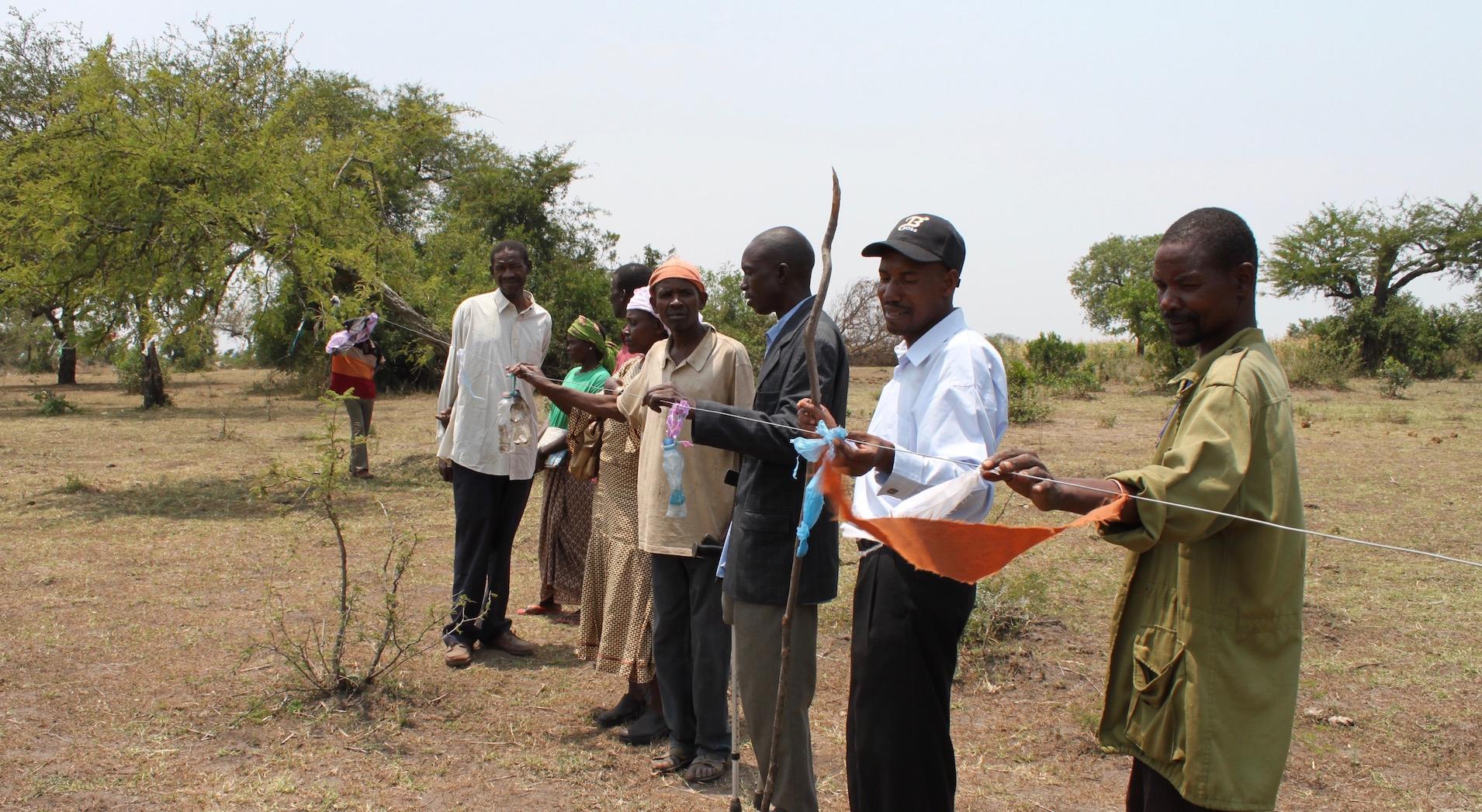Human–Elephant Conflict in the Serengeti: The Side-Effects of Wildlife Tourism
archive


Figure 1: tourists and elephants in the Serengeti (photo credit: Yukino Iwai)
Human–Elephant Conflict in the Serengeti: The Side-Effects of Wildlife Tourism
Tourism is a growing industry in Tanzania. In 2017, tourism revenue reached US$4.7 billion, around 9% of Tanzania’s GDP.1 Among Tanzania’s tourist attractions, the Serengeti National Park is one of the best-known destinations. The park draws around 400,000 tourists annually, who visit in order to see the great savannah plains and the spectacular wildlife.
There are about 60 known species of mammals and over 500 species of birds in the Serengeti, among which African elephants (Loxodonta Africana) are the most popular. The elephants fascinate people all over the world, and are an important and pivotal resource in the tourism industry (Figure 1). If African elephants are conserved more strictly, it’s estimated that African tourism’s economic impact could be increased by US$25 million annually.2
For this reason, the Government of Tanzania takes care to protect the elephants of the Serengeti. Since the Convention on the International Trade in Endangered Species of Wild Fauna and Flora (or CITES) prohibited international trade in ivory in 1989, the Serengeti National Park’s elephant population has steadily increased. Between 2006 and 2014, for instance, the number of elephants in the park doubled to 6,000.3
Despite the tourist potential, in recent years local residents around the Serengeti National Park have looked upon elephants as problem animals. This is because of a number of incidents where elephants have destroyed agricultural crops and even killed some farmers, something which is termed ‘human-elephant conflicts.’4 Thus, in the context of the Serengeti the African elephant paradoxically brings in tourism profits while at the same time endangering local livelihoods.
This article discusses this paradox through a focus on human-elephant conflict in a village in the Serengeti District adjacent to the Serengeti National Park, where I have been conducting anthropological research for the past 20 years (see Figure 2). I describe, firstly, the burdens that wildlife tourism can impose on locals, and discuss, secondly, how with inadequate support from external actors and little tourism benefit-sharing, residents try to mitigate the impact of elephant crop raiding through a local initiative known as ‘Living with Elephants.’ The article presents a perspective on human-animal conflict in the context of African wildlife tourism, and how tourism and nature conservation shape local livelihoods.

Figure 2: Research site in Tanzania
The Serengeti National Park was established in 1951. With a large land area of 15,000km² and its spectacular savannah ecosystem, it is also famous as a world heritage site. The Park’s annual tourist income has been estimated at US$800 million.5 The resurgence of the elephant population has contributed to the high tourism value of the Serengeti National Park. In Tanzania as a whole, poaching reduced the number of elephants by 78% from 137,000 in 2006 to 44,000 in 2014,6 although currently, with the Tanzania government and international organizations’ efforts, poaching has dropped.7 On the other hand, the elephant population in the Serengeti has continued to increase due to vigilant regulation and policing of poaching by the government.
Growing tourism revenue, little benefit-sharing
While tourism revenue has been increasing, most of the people living around the Serengeti National Park are burdened by the costs and side-effects of wildlife tourism, without seeing many of the benefits. Some communities originally lived on the land now covered by the Park, but were forced to relocate in 1951. With the establishment of the Park, hunting and the consumption of wildlife meat were forbidden, taking away a key form of local livelihood. At the same time, local residents find it difficult to get employment in the tourism industry. Townsfolk with schooling are predominantly hired, while local residents are generally offered short-term, casual, lower-paid employment.
...in the context of the Serengeti the African elephant paradoxically brings in tourism profits while at the same time endangering local livelihoods.
In an effort to more equitably distribute tourism revenue, the Tanzanian government introduced a system called Wildlife Management Areas (WMAs) in 2006. The WMA is an area of communal land set aside exclusively as habitat for wildlife by member villages, in which the local communities have the right to lease the area to tourism operators to generate revenue. The system has however not been functioning effectively.8 In the Serengeti District, IKONA WMA was established and it saw good revenue growth, reaching US$500,000 in 2012.9 However, its earnings are distributed to only five member villages. Twenty other villages in the district are not members of the WMA because their land is inadequate for wildlife habitation and they are far from the main tourist infrastructure. Ironically, it is these 20 villages—with a human population of around 40,000—that are most heavily affected by elephants’ crop raiding. Given this fact, the WMA’s benefits can be said to be limited, both in terms of the revenue generated and the land area covered. Further, most tourism revenue goes to the government and foreign tourism enterprises rather than the villages included in WMAs.
Human–Elephant Conflict in the Serengeti
Even though they don’t benefit from wildlife tourism, most of the residents in Serengeti District are affected by what may be termed the unintended side-effects of tourism and wildlife protection. The experience in Village A, my research site, is a case in point. Village A shares an eight-kilometre border with Ikorongo Game Reserve, which is adjacent to the Serengeti National Park (see Figure 2). Since there are no fences, all animals, including elephants, can move freely between the Game Reserve, the National Park, and the village (Figure 3).

Figure 3: an elephant in Village A, Serengeti District (Photo: Yukino Iwai)
Village A has a population of approximately 3,000 persons. Agriculture and livestock keeping are the main livelihoods, average cultivation area per household is five acres, and the main crops cultivated are maize, sorghum, and cassava.
It was around 2005 that the elephants started causing damage in Village A. In the beginning, only a handful of elephants entered the village a few times a year. However, the size of the elephant herd grew annually and the frequency of their entries into the village increased, with these intrusions causing severe damage since 2010. Based on my research between February and August 2017, the average herd size of elephants entering the village was ten; the largest herd had as many as 70. The elephants entered every two to three days.
Once an elephant herd enters a field they eat all the crops in a few hours. After such an incident, residents suffer food shortages and out of necessity they have to spend less on things such as their children's education or on medical expenses, and prioritize food purchases. Indeed, villagers’ quality of life significantly deteriorates because of the elephant raids. Moreover, encounters with the elephants can sometimes be deadly—in 2015, four people were killed in the district. Under these circumstances it is understandable that villagers see the elephants as a threat (Figure 4). Human-elephant conflict is complex. Tanzanian law strictly protects elephants, while villagers seek to protect their crops by driving the elephants from their fields and risking their lives in such efforts (elephants are 4–5 meters tall and weigh as much as 6–7 tons).

Figure 4: part of a herd of fifty elephants in the village as a villager tries to drive them back into the reserve. (Photo: Yukino Iwai)
Villagers’ efforts to mitigate elephant raids
In 2015 villagers laid a single wire fence along the boundary between the Game Reserve and the village (Figure 5). Most elephants are wary of the wire, and the fence is effective for now. But in addition, to keep the animals away young villagers launched an initiative called ‘Living with Elephants’ in 2016. Team members created watch points along the wire fence so that when an elephant approaches too closely they form a group of about 20 people and use firecrackers to drive them off.
In this way, Village A has managed to somewhat reduce crop damage in the last three years. However, elephants are smart and capable of learning; they can adapt to the countermeasures people create if they are in use for too long, forcing villagers to explore other measures to protect their fields from elephant raiding.

Figure 5: villagers tie strips of colored cloth to wire fence. (Photo: Yukino Iwai)
Conclusion
The inhabitants in the Serengeti District have attempted to control human-elephant conflict at ground level through a range of short-term measures, but the Tanzanian government has not developed a long-term strategy to deal with the matter, forcing farmers to devote their own resources to mitigation. Human-wildlife conflict over natural resources is symptomatic of power disparities among the different stakeholders in wildlife tourism. The Serengeti is not unique in this regard. As Adams and Hutton have pointed out,10 similar conflicts and inequalities occur in nature protected and wildlife tourism areas around the world. Powerful governments and international tourism enterprises collaborate to drive out powerless local residents. Their actions and the unequal distribution of tourism profits therefore tend to reinforce human poverty at the local level while celebrating global principles of wildlife conservation.
1. World Travel and Tourism Council (2018) Travel and Tourism Economic Impact 2018 Tanzania, London.
2. Naidoo, R., Fisher, B., Manica, A., and Balmford, A. (2016) ‘Estimating economic losses to tourism in Africa from the illegal killing of elephants’, Nature Communications.7:13379. https://doi.org/10.1038/ncomms13379 (last accessed on 18 July 2018).
3. WWF (2014) Aerial Total Count of Elephants and Buffalos in the Serengeti-Mara Ecosystem, World Wildlife Fund for Nature, Nairobi.
4. Hoare R. E. (1999) ‘Determinants of human—elephant conflict in a land use mosaic. ‘ Journal of Applied Ecology 36: 689–700.
5. World Bank (2015) Tanzania’s Tourism Futures: Harnessing Natural Assets, The World Bank Group, Wshington DC.
6. Tanzania Wildlife Research Institute (2015) Population Status of Elephant in Tanzania 2014, TAWIRI, Arusha.
7. Tanzania: Elephant Poaching Nosedives, Tanzania Daily News, 20 December 2017,
https://allafrica.com/stories/201712200337.html (last accessed on 18 July 2018).
8. Benjaminsen, T.A., and I. Bryceson (2012) ‘Conservation, green/blue grabbing and accumulation by dispossession in Tanzania,’ Journal of Peasant Studies 39 (2): 335–355.
9. WWF (2014) Tanzania's wildlife management areas: A 2012 status report, World Wildlife Fund for Nature Tanzania, Dar es salaam.
10. Adams, William M. and Jon Hutton (2007) “People, Parks and Poverty: Political Ecology and Biodiversity Conservation.” Conservation and Society 5(2):147-183.



